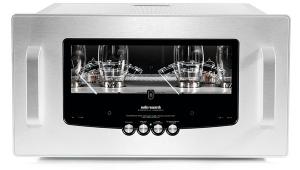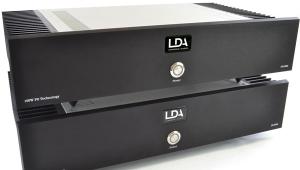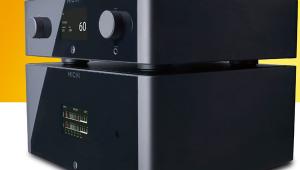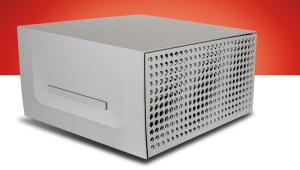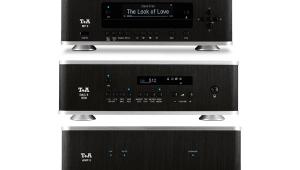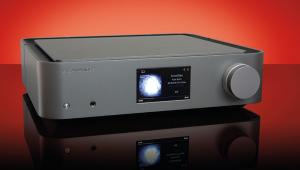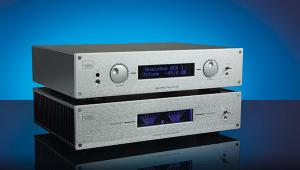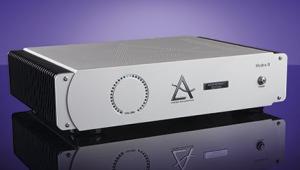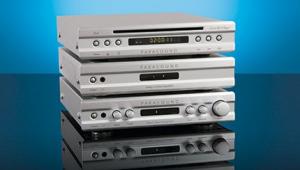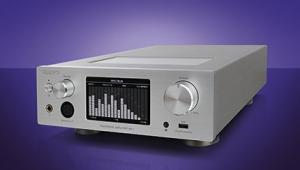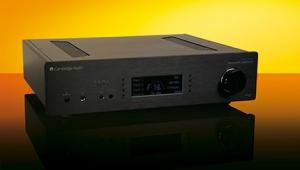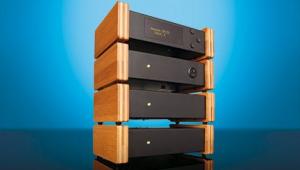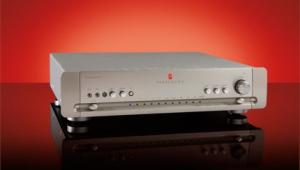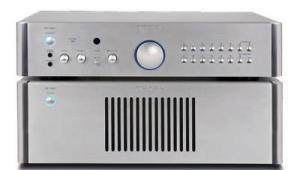Astin Trew AT1000/AT5000 - £650/£850
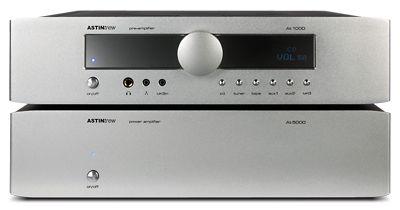
Astin Trew is a young company which we’ve watched develop with increasing admiration. We’ll come to the all-important sound performance in a few paragraphs, of course, but we would be remiss if we didn’t praise the company for the highly professional look and finish of its amplifiers: these are really very smartly made units that, clichés aside, genuinely transcend their price tag. Most of the manufacturing process is carried out in China, but AT has done its homework and attended to all sorts of details.
And the insides have hardly been skimped on, either. For a start, the AT5000 is a fully dual-mono power amp, right down to mains transformers – two hulking great toroids, each feeding a bank of smoothing capacitors after some low-noise Schottky rectifiers. The amplifying circuit uses a variety of devices, including a single valve per channel, small-signal transistors and a pair per channel of output MOSFETs, which are fixed to each side panel for heatsinking. Rated power is quite modest for the size.
Over at the preamp, good-quality construction remains a theme. All components are through-hole types and again there are a couple of valves in evidence as well as a lone dual op-amp which, like the electronic volume control chip, sports a tiny heatsink. One minor annoyance concerns volume steps, which as so often are fine over the top (mostly useless) part of the range and coarser lower down. Six line inputs (including the front-mounted MP3 mini-jack) should cater to most users.
Sound qualityIf our listeners didn’t entirely go overboard for this combination, they did find some nice things to say about it. Its presentation was felt to have plenty of drive and well-extended bass, while the treble is extended and open. The main problem seems to be precision, in the most general terms. Both in the bass and in the treble, there is a slight lack of control which lessens impact and smudges detail, making the sound frustratingly hard to focus on.
This is a real shame because there are clearly aspects to the sound that are excellent. Tonality is very good in the voice ranges, while the unforced bass extension makes the most of sustained low notes from instruments like organ and low brass. Treble is clear and sweet, but too easily upset by densely layered music.
It’s a similar story with rhythm. If you hear something simple and rhythmic, for instance an insistent percussion riff at the start of a song, there’s great energy to the sound and a real feeling of urgency. When the rest of the band comes in, though, the rhythmic impetus is lost or, at least, very much lessened and weakening the structure of the music significantly.
If your tastes run predominantly to small-scale music – string quartets, say, or simple voice-and-guitar ballad stuff – you will be well placed to appreciate what this combination does in the way of tonality and insight. More broadly speaking, though, we find ourselves with reservations about the way it fudges the issue with more complex music.
LIKE: Beautifully put together and capable of beguiling sounds
DISLIKE: Loses the plot when the going gets tough
WE SAY: An attractive product, which seems rather too limited for general recommendation on sonic grounds
DETAILS
DISTRIBUTOR: Astin Trew
TELEPHONE: 01491 629629
WEBSITE: astintrew.co.uk
 |
Inside this month's issue:
Ruark R610 music system and Sabre-R standmount speakers, PMC twenty.23i Active, floorstanders, English Acoustics Downton preamplifier, Bluesound NODE ICON preamp/streamer, Ortofon Concorde Music Blue MM cartridge and much, much more
|

